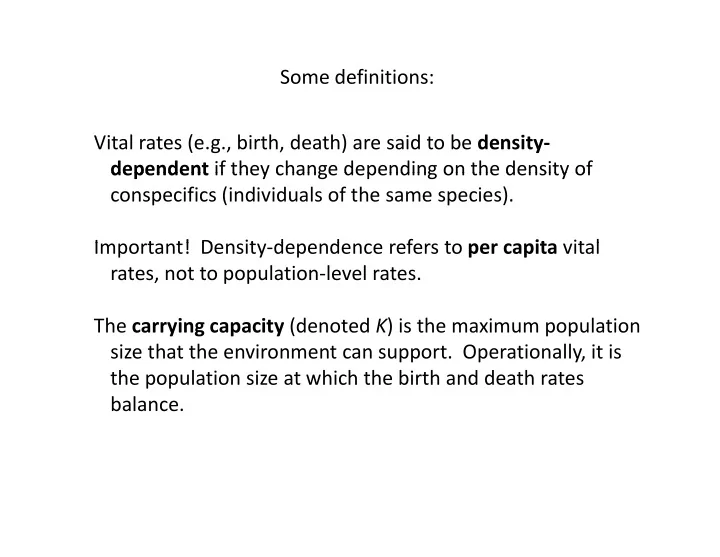

Some definitions: Vital rates (e.g., birth, death) are said to be density ‐ dependent if they change depending on the density of dependent if they change depending on the density of conspecifics (individuals of the same species). Important! Density ‐ dependence refers to per capita vital I t t! D it d d f t it it l rates, not to population ‐ level rates. The carrying capacity (denoted K ) is the maximum population size that the environment can support. Operationally, it is the population size at which the birth and death rates the population size at which the birth and death rates balance.
The logistic population growth model: some history 1838: First placed in the literature by the French mathematician Pierre ‐ Francois Verhulst. Verhulst coined the term “logistic” (actually, “logistique”). 1920: Re ‐ developed by Raymond Pearl and L.J. Reed. 9 0: Re developed by Raymond Pearl and .J. Reed. Proposed as a model for the growth if the U.S. population. Predicted a carrying capacity for the U.S. population of 197M. (Current U.S. population approx. 315M.) Pearl later 197M (Current U S population approx 315M ) Pearl later discovers Verhulst’s work and adopts the name “logistic”. 1920s, 1930s: Logistic growth model fits reasonably well to simple experimental populations (Pearl’s Drosophila , Chapman’s flour beetles, Gause’s Paramecium ). p , ) from Ricklefs, Ecology
Controversy! 1954: H. G. Andrewartha and L. C. Birch argue that laboratory experiments overstate the importance of biotic mechanisms of density dependence (e.g., competition for food, space), of density dependence (e.g., competition for food, space), and understate the importance of environmental influences on population growth (namely, climate). Strongly influenced by dynamics of thrips influenced by dynamics of thrips. 1950s, 1960s: Heated debate about importance of density ‐ dependent vs density ‐ independent factors. Reconciliation: Even though abiotic factors may vary Reconciliation: Even though abiotic factors may vary independently of a species’ population size (think of stochastic variation in K ), species densities must ultimately be self limiting be self ‐ limiting. from Ricklefs, Ecology
Recommend
More recommend